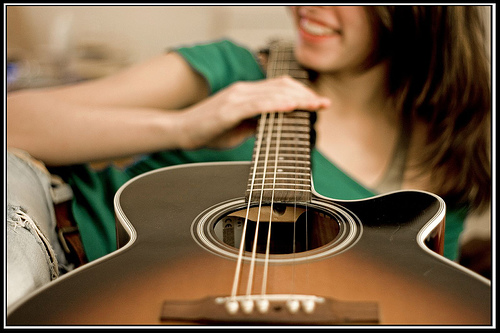
Just a bit of fun – there’s a lot of doom and gloom around in some parts of the music industry, so here are some reasons that I see to be optimistic about music, recording, mixing and production as we start the New Year.
Increasing bandwidth
The mp3 is dead. Internet download speeds are increasing at a startling rate, and this means lossy audio compression will gradually become a thing of the past – higher bandwidth means there’s no need for it. Which is good news for audio, since as we all know, mp3 sucks.
However, a major factor driving higher-quality audio codecs will actually be mp3 players, oddly enough ! In order to sell us new, higher-capacity iPods and phones, manufacturers will need to persuade us that we actually need the extra space they offer – and one very easy way to do that is to promote higher-quality audio, with it’s much larger file-sizes.
How long before we get lossless 24/96 support on the iPod, I wonder ?
Loudness War backlash
Of course lossless audio is no use if the original mixes sound like crap – and, unfortunately lots of them do, at the moment. But, I firmly believe that the tide is turning and that excessively loud, generically distorted recordings will also become a thing of the past. Partly because people like you and me are complaining more and more; partly because readily-available tools like the TT Dynamic Range meter make it much easier to educate people about the problems; but mainly because software players like Spotify will make the loudness war irrelevant.
DIY Rules – the return of real sounds
Audio recording used to be a huge challenge, and that’s what made life (and the records) interesting !
These days, anyone can have a passable facsimile of a Hammond, Bösendorfer or even a Hang Drum, all for the sake of a few hundred dollars (or an illegal download). Virtual guitarists, virtual amps, virtual drummers – they sound fantastic, they are technically astonishing, and unless they’re used with genuine flair and talent, they are incomparably DULL.
The delight in recording many instruments lies in the challenge of actually capturing them in the first place – and thankfully, a whole new generation of musicians and engineers is discovering this. Artists like Imogen Heap, Diego Stoco and many others are using modern technology to record real instruments in unusual places, unusual instruments in unexpected places, and things that actually aren’t instruments at all in places that… well anyway, they’re generally experimenting and having fun.
So while I love recording studios, and it gives me no pleasure at all to think of all those that are struggling or going under at the moment, it gives me very great pleasure to know that fantastic, adventurous, high-quality recordings are being made and will be made… well, everywhere and anywhere.
Blu Ray is on the way
Blu Ray is the high-definition replacement for DVD. This year, cutting-edge Blu Ray players are available for only $200. Soon, all new DVD players sold will actually be Blu Ray players.
Blu Ray offers uncompressed, 24/96 surround-sound audio.
I think that opportunity speaks for itself, doesn’t it ?
Web 2.0 and beyond
Clearly, the internet presents all manor of threats to the music business as it has operated for the last couple of decades – I don’t need to re-hash them here. But it also presents awesome opportunities.
Services like Dropbox make long-distance collaboration genuinely possible, if not entirely straightforward. Social media like Twitter and online Forums connect us and give us community and allow us to offer support and assistance. Blogs offer news, comment and education. Online payment is straightforward.
Geographical location will soon be irrelevant – maybe it already is – especially as streaming live audio and video from the studio becomes straightforward. You can’t beat having artists with you for the mix, but if they can listen and comment in good quality from the other side of the world, exactly what “with you” means starts to become a little complicated !
And some artists are using the web in more and more interesting ways – one of my favourites is Imogen Heap, who I mentioned above. She connects directly to her fans and asks for their opinions while songwriting, recording and mixing, even improvising one track while streaming live and asking for comments. She offered her new album to listen for free on the day of release, by anyone who chose to embed it – trusting the quality of her work to power sales. On her recent tour, she held live web auditions for a different local cellist at every venue on the tour. The artwork artist was chosen via a crowd-sourced competition, and fans contributed to her biography via Twitter… the list goes on.
I for one can’t wait to see what she, and all the rest of the next generation of online musicians, producers and engineers, do next.
So, despite the many challenges we all face, I feel cheerful about music and audio production, heading into the next decade – and, I hope you do, too !
Image by Rachel Sian